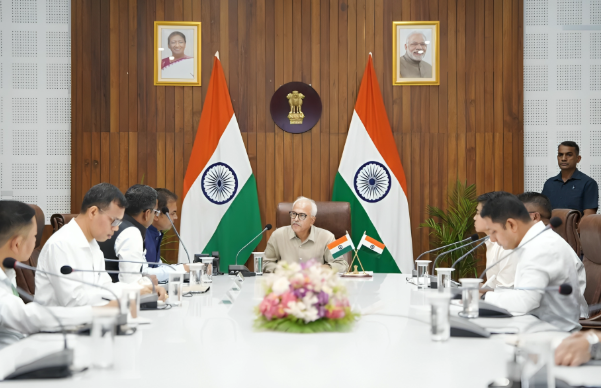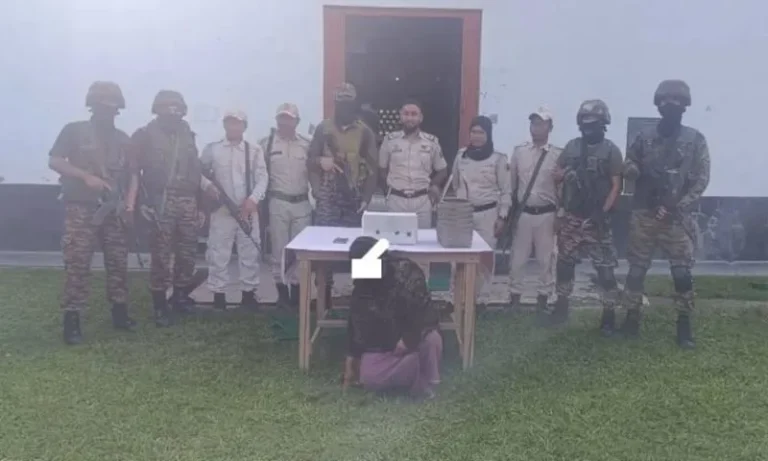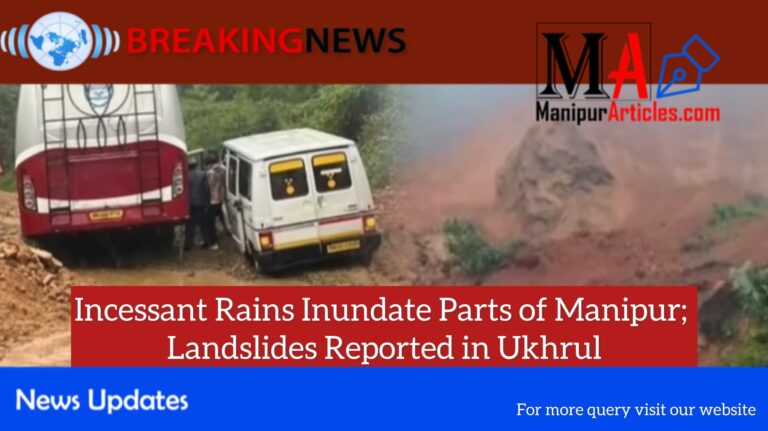MANIPUR GOVERNOR AJAY KUMAR BHALLA REVIEWS WELFARE MEASURES FOR INTERNALLY DISPLACED PERSONS
Summary of the News
On July 14, 2025, Governor of Manipur, Ajay Kumar Bhalla, convened a high‑level meeting at the Raj Bhavan to evaluate and enhance relief and rehabilitation efforts for Internally Displaced Persons (IDPs) in the state. Joined by the Chief Secretary, Deputy Commissioner of Imphal West, and senior officials, the Governor reviewed progress on camps, shelters, food, healthcare, and education. A highlight was the status update on a dedicated IDP portal for real‑time data tracking and transparent service delivery. Governor Bhalla stressed the importance of seamless coordination across departments to ensure welfare schemes reach those in need effectively
1. Understanding the Displacement Crisis in Manipur
Manipur has witnessed serious ethnic violence since May 2023, especially between the Meitei and Kuki communities. It has forced over 60,000 people into displacement, with camps set up in valley areas and hill districts. Governor Bhalla’s intervention comes amid a pressing humanitarian need to stabilize lives torn apart by violence, rebuilding trust and social infrastructure.
2. Governor Bhalla’s Role and the High-Level Review
Ajay Kumar Bhalla, who became Governor in December 2024, brings decades of experience—from his tenure as Union Home Secretary (2019–24) to serving as Power Secretary . His leadership in this review underlines a strategic shift: not just security-focused oversight, but a people‑centric governance approach. By chairing this meeting, he’s signaling that IDP welfare isn’t a peripheral concern—it’s a statewide administrative priority.
3. The IDP Portal: Harnessing Tech for Relief
One standout initiative is the dedicated IDP portal, which functions as a dynamic dashboard to:
- Capture real‑time data on camp populations
- Track food, healthcare, and resource distribution
- Increase transparency in deployment of funds and materials
By using digital tools, the state can plug gaps faster, reduce waste, and better serve vulnerable populations. Think of it as a centralized control room: when one department posts an update, others can act immediately—no more bureaucratic bottlenecks.
4. Key Welfare Areas Under Focus
Food and Nutrition
Ensuring regular, nutritionally balanced meals for thousands of IDPs across camps. Governor Bhalla urged department heads to prevent duplicate or missed provisionsHealthcare
Monitoring vaccination drives, COVID care, maternal-child services, and mental health support—essential in a community living in limbo.
Shelter and Infrastructure
Inspecting camp layouts, sanitation, safe drinking water, and winter prep—crucial in hills where weather is unforgiving.
Education and Livelihood
Exploring temporary schooling, skill-building workshops, and job linkages to reduce displacement’s long-term fallout—especially for children and young adults.
5. Institutional Coordination: Breaking Silos
A major takeaway was Governor Bhalla’s emphasis on inter-departmental coordination. Relief efforts often falter when Health, Relief, Education, and local administrations work in isolation. Bhalla urged regular sync-ups, unified plans, and shared accountability—so that one department’s shortfall doesn’t ripple across the system
6. What This Means for IDPs and Communities
This isn’t just administration-speak—there are real lives behind the data:
- 62-year-old Mrs. Thangkhul from Churachandpur told us, “Knowing the Governor is taking personal notice gives me hope—we know someone is watching.”
- Teenagers like Renu (14) have lost school time; bridging that gap can prevent long-term social disintegration.
Governor Bhalla’s engagement signals a deeper hope: that displacement isn’t permanent exile—but a transition towards normal life with dignity intact.
FAQs
1. What triggered the mass displacement in Manipur?
Widespread ethnic violence between Meitei and Kuki communities since May 2023, resulting in over 60,000 people being displaced and forced into relief camps
2. How does the IDP portal improve welfare delivery?
It offers real-time data on camp populations, resource distribution, and service gaps, enabling better coordination and reducing misallocation .
3. Who participates in the Governor’s review meetings?
Key state-level officials like the Chief Secretary, Deputy Commissioner of Imphal West, and representatives from departments including Health, Relief, Education, and Social Welfare
4. What are the major welfare areas under review?
Food security, healthcare (including mental health), shelter quality, sanitation, education continuity, and livelihood support.
5. Can this governance model apply elsewhere?
Absolutely. The combination of digital monitoring, inter-departmental coordination, and community feedback can be adapted for other conflict-affected or disaster-hit regions for efficient relief delivery.




